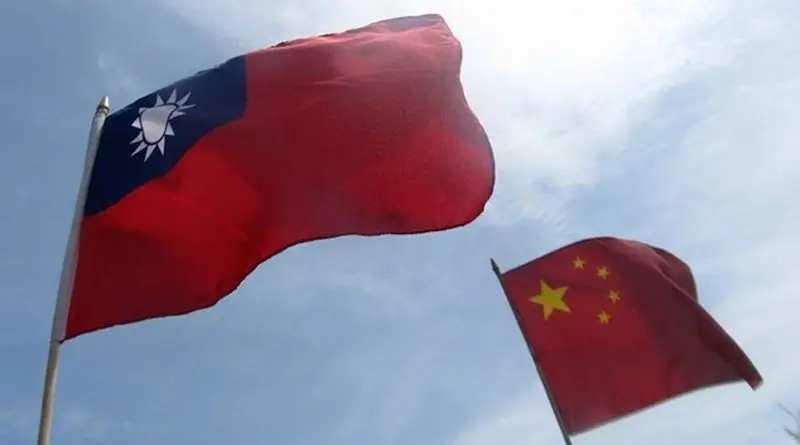The Taiwan Conflict: Litmus Test For America
China poses a gargantuan threat to Taiwan’s national security and survival ever since the US-China confrontation has occupied a centre stage on the issue of free navigation in the South China Sea. To deter the US threat, China has deployed anti-ship ballistic missiles in the South China Sea. On the other hand, America has moral obligation to protect Taiwan’s autonomy against China’s military offensive by selling advanced weapon systems to Taipei, even though America terminated the mutual defence pact with Taiwan in 1979. Moreover, America has despatched its aircraft carrier in the Taiwan Strait to stave off China’s imminent threat to Taiwan’s security. Also, America has established forward bases in the Indo-Pacific, while realizing that the “military balance” in the Asia-Pacific region is fast shifting against it.
Realistically enough, China has developed an overwhelming maritime capability to deal with the US threat in the Taiwan strait. Admiral Phil Davidson, then head of the U.S. Indo-Pacific Command, “warned that there was a significant possibility of an attack on Taiwan in the next six years.” If viewed from a strategic prism, President Xi Jinping has set the “red lines” on the Taiwanese issue. He has made it clear that China is determined to complete the process of reunification between Beijing and Taipei, even though it has to use force. This scenario has, of course, heightened tension in the region.
The One China Principle: the root cause of Friction
A new era of détente in China-US relations began with a secret trip of Henry Kissinger, President Richard Nixon’s Assistant for National Security Affairs, to China in July 1971. His visit prepared a propitious environment for President Richard Nixon’s historic visit to China in 1972, with an intent to jumpstart the formal process of normalising relations between America and China. At the end of Nixon-Kissinger’s visit, a joint statement, the Shanghai communique, was issued. Under the communique, America explicitly endorsed the One China principle, while simultaneously underscored to maintain its unofficial relations with Taiwan. In other words, Nixon made it clear that America would not support Taiwan’s “independence movement.”
Kissinger also acknowledged in an interview that America did that arrangement in order to avoid a “major confrontation” with China. But at the same time Kissinger reiterated that America had kept the option open for a peaceful resolution of the Taiwan issue, while advising Taiwan not to declare a formal independence. He stated, “One, we should maintain the ‘one China’ policy that every American president has articulated, including President Reagan. Secondly, we should make clear that we want a peaceful resolution. And three, Taiwan should not challenge that arrangement in a way that will provoke a conflict. Those are three perfectly clear principles.”
That policy worked well for over three decades. But things have changed with President Xi Jinping’s “assertive” Chinese foreign policy in contrast to his predecessors’ low-profile approach. President Xi has been occasionally reminding America of its past commitment to a One-China policy, meaning China’s legitimate right to reunify Taiwan either through peaceful or coercive means. In this scenario, America is faced with a grave dilemma. If it does not effectively respond to China’s military offensive against Taiwan, it will send wrong signals to its allies like Japan and South Korea that America is not a dependable partner as proven in the case of Afghanistan that was left in the lurch when the Taliban captured Kabul without any resistance.
It is, however, a matter of conjecture whether or not America would come to Taiwan’s rescue if China were to attack it militarily. But for sure, the Biden administration has given clear signals to avoid a conflict with China over the brewing tension in the Taiwan Strait. On January 23, 2021, the Biden administration issued a statement “PRC Military Pressure Against Taiwan Threatens Regional Peace and Stability.” The statement “urged Beijing to ‘cease its military, diplomatic, and economic pressure against Taiwan and instead engage in meaningful dialogue with Taiwan’s democratically elected representatives.’”
In other words, President Biden is trying to reset Washington’s ties with Beijing in order to help reshape the “geopolitical landscape” in coming decades. But in case China goes to war with Taiwan, America will have a limited option—garnering military and strategic support from Japan and its other allied partners to “keep the war limited”. But the notion of limited war, in practice, is unfeasible once a full-fledged military operation is launched against Taiwan by China.
Conclusion
The Biden administration has realized that given China’s aggressive behaviour towards Taiwan, American foreign policy will need to make tactical adjustments to the murky strategic environment in the region. At the same time, the parties involved in a tug of war— America, China and Taiwan— are called upon to pursue the strategic “doctrine of restraint” as well as to avoid using the belligerent tones on both sides. Undoubtedly, Taiwan is a litmus test for the Biden administration’s foreign policy and diplomacy. The administration is gripped by the dilemma of maintaining the good relationship with China on the one hand, and safeguarding Taiwan’s autonomy and security against an impending Chinese threat on the other.
*Prof. B.M. Jain, Chief Consultant, Canadian Society for Peace and Global Studies

